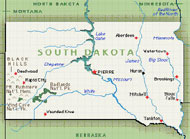| 8.0 | MAINTENANCE AND CONSTRUCTION MANAGEMENT |
| 8.1 | MAINTENANCE AND CONSTRUCTION OPERATIONS |
| 8.1.1 | Maintenance and Construction Operations shall provide a Maintenance Vehicle Fleet Management (MVFM) function to schedule and dispatch, monitor and track location, and monitor operational condition and maintenance requirements of public and contracted fleets of maintenance, construction, and specialized service vehicles. This function includes interactions among Traffic Managers, Supervisors, Dispatchers, Field Crews, Construction Crews, Vehicle Maintenance Crews, Equipment Maintenance Crews, Weather Services Organizations, and Information Service Providers. |
| 8.1.1.3 | MVFM shall be capable of supporting interactive data communications between dispatchers and operators of public and contracted maintenance, construction, and specialized service vehicles. |
| 8.1.1.3.1 | MVFM shall be capable of communicating information to vehicle operators, including but not limited to: |
| 8.1.1.3.1(a) | Routing information |
| 8.1.1.3.1(b) | Scheduling data |
| 8.1.1.3.1(c) | Dispatch instructions |
| 8.1.1.3.1(d) | Corrective actions |
| 8.1.1.3.1(e) | Environmental information (road and weather conditions) |
| 8.1.1.3.2 | MVFM shall be capable of communicating information from vehicle operators, including but not limited to: |
| 8.1.1.3.2(a) | Work data |
| 8.1.1.3.2(b) | Operator status |
| 8.1.1.3.2(c) | Crew status |
| 8.1.1.3.2(d) | Equipment status |
| 8.1.1.6 | MVFM shall be capable of providing dispatchers and operators of maintenance, construction, and specialized service vehicles with information regarding potential and actual roadway problems. |
| 8.1.1.6.1 | MVFM shall provide information to dispatchers and vehicle operators, including but not limited to: |
| 8.1.1.6.1(a) | Congestion |
| 8.1.1.6.1(b) | Incidents |
| 8.1.1.6.1(c) | Roadway restrictions |
| 8.1.1.6.1(d) | Environmental conditions |
| 8.1.1.6.5 | MVFM shall provide information to the vehicle operators concerning roadway problem spots and alternate routes because of potential or actual roadway problems. |
| 8.1.3 | Maintenance and Construction Operations shall provide a Work Zone Management and Safety (WZMS) function, which provides support for the effectiveness, safety, and efficiency of roadway operations during all work zone activities. This function includes interactions among Traffic Managers, Supervisors, Dispatchers, Field Crews, Construction Crews, Public Safety Organizations, Information Service Providers, and Travelers. |
| 8.1.3.2 | WZMS shall support the management of data about work zones. |
| 8.1.3.2.1 | WZMS shall collect information concerning work zone activities, including but not limited to: |
| 8.1.3.2.1(a) | Location |
| 8.1.3.2.1(b) | Nature / type |
| 8.1.3.2.1(c) | Scheduled start time |
| 8.1.3.2.1(d) | Duration |
| 8.1.3.2.1(e) | Lane shifts |
| 8.1.3.2.1(f) | Staging areas |
| 8.1.3.2.1(g) | Length of work zone |
| 8.1.3.2.1(h) | Scheduled phases of work zone configuration |
| 8.1.3.2.1(i) | Alternate routes |
| 8.1.3.2.1(j) | Anticipated delays for travel route |
| 8.1.3.2.1(k) | Anticipated delays for diversion route |
| 8.1.3.4 | WZMS shall support the provision of vehicle intrusion warnings. |
| 8.1.3.5 | WZMS shall be capable of tracking individual crew movements. |
| | |












